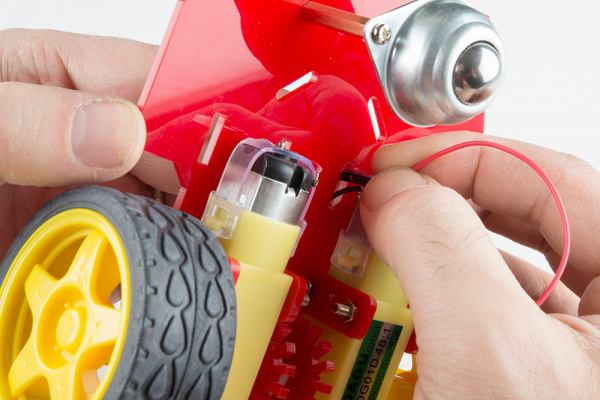The ability to think out of the box and take risks is something that declines as we age within a career, and that means that by tenth grade, most students have had that ability beaten out of them like a prisoner at Guantanamo.
...too soon?
 |
| image from reason.com |
"What EXACTLY am I supposed to do with this? How does this go together? How do you want me to do this?" the student says.
"Figure it out. How does it make sense to go together? Why do I care how you build your robot? It's your robot!" I respond.
At this point I usually smile and ask them what they think makes sense. I will also frequently question their very correct and well thought out decisions, just to make sure that they are becoming experts on the topic.
 One by one, the students shuffle to the workbenches and begin trying to build. Some draw plans first, some try to fit pieces together, and others turn to the almighty Google to give them guidance. The Google group were disappointed because the Redbot is actually built on top of the Magician Chassis, which is not always a logical search.
One by one, the students shuffle to the workbenches and begin trying to build. Some draw plans first, some try to fit pieces together, and others turn to the almighty Google to give them guidance. The Google group were disappointed because the Redbot is actually built on top of the Magician Chassis, which is not always a logical search.The fact of the matter is that no way was wrong. It was highly entertaining to see students screwing parts onto their robot before discovering that they made the back far too tall, reminding me of the people who walk on their hands.
Everyone was failing...it was awesome.
 |
| image from redbot.onehumanbeing.com |
Those who were most immediately successful were those who thought like first graders. Those who sat down and tried a handful of methods before they found one that worked. Students have barely left the Ideate phase and they are already starting to develop the ability to send tendrils of thought into the many choices they have with this project.
And it all stems out of simplicity. The single question that was mandatory for all students to answer was:
What is RedBot’s Purpose?
It spans back to the question that all students fight to answer as they travel through school:
What is my purpose?
No comments:
Post a Comment